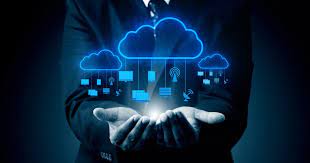Cloud computing has revolutionized the way businesses and individuals store, manage, and process data. Over the last decade, cloud technologies have evolved at a rapid pace, transforming industries by providing scalable, cost-effective, and flexible solutions. As we look to the future, cloud computing will continue to advance, shaped by new technologies, emerging trends, and evolving market demands. Understanding the future trends in cloud computing will help businesses and professionals stay ahead of the curve and leverage the potential of the cloud.
In this article, we will explore the future trends in cloud computing, from artificial intelligence (AI) and machine learning (ML) integration to the rise of hybrid and multi-cloud strategies. We’ll also look at the increasing emphasis on security, edge computing, and the role of quantum computing in cloud environments. Let’s dive into these exciting developments.
1. AI and Machine Learning Integration in the Cloud
Artificial intelligence and machine learning are already having a profound impact on cloud computing, and this trend will only intensify in the future. AI and ML are being embedded into cloud platforms to enhance data processing, analysis, and automation.
In the future, cloud providers will continue to offer AI-powered services such as:
- Automated Data Analysis: Cloud-based AI tools will help businesses automate data analysis, uncover trends, and make data-driven decisions faster and more efficiently.
- Advanced Predictive Analytics: By integrating ML algorithms with cloud data storage and processing capabilities, businesses will be able to anticipate customer behavior, forecast market trends, and optimize operations with greater accuracy.
- AI-as-a-Service: Cloud vendors will provide more specialized AI tools and models as a service, enabling businesses of all sizes to leverage AI capabilities without the need for in-house expertise.
2. Hybrid and Multi-Cloud Environments
The trend toward hybrid and multi-cloud environments is expected to continue growing. A hybrid cloud combines on-premises infrastructure with private and public cloud services, offering flexibility and control. A multi-cloud environment involves using multiple cloud services from different providers, ensuring redundancy, risk mitigation, and optimized performance.
As companies move away from relying on a single cloud provider, hybrid and multi-cloud strategies will provide several benefits:
- Flexibility and Vendor Independence: Organizations can select cloud providers based on specific needs, such as pricing, compliance requirements, or performance capabilities, rather than being tied to one vendor.
- Disaster Recovery and Redundancy: With a multi-cloud approach, businesses can ensure that if one cloud service experiences downtime, they can quickly failover to another provider without disrupting operations.
- Compliance and Data Sovereignty: By leveraging different clouds located in different geographical regions, companies can better comply with data sovereignty and local regulations.
3. Edge Computing Expansion
Edge computing, which involves processing data closer to the location where it is generated rather than in centralized data centers, is becoming increasingly important in cloud computing. This trend is driven by the need for faster processing times, lower latency, and greater efficiency in the Internet of Things (IoT) and other real-time applications.
In the future, edge computing will likely play an even larger role in cloud infrastructure by:
- Reducing Latency: For applications that require real-time processing, such as autonomous vehicles, augmented reality (AR), and smart cities, edge computing will enable faster responses by processing data locally rather than sending it to distant data centers.
- Increasing Efficiency: Edge devices can perform initial data processing and only send relevant information to the cloud for further analysis, reducing the amount of data transferred and improving bandwidth usage.
- Enabling IoT Growth: As IoT devices proliferate, edge computing will support the massive amounts of data generated by these devices, enabling quicker and more localized insights.
4. Serverless Computing and Function-as-a-Service (FaaS)
Serverless computing is a model in which developers can build and deploy applications without worrying about the underlying infrastructure. The cloud provider automatically manages the infrastructure, scaling the resources as needed.
The future of serverless computing includes:
- Faster Development Cycles: Developers can focus on writing code rather than managing servers and infrastructure, leading to faster development and deployment of applications.
- Cost Optimization: Serverless computing allows businesses to pay only for the exact compute power they use, reducing costs compared to traditional cloud models.
- More Advanced Use Cases: The serverless model will expand to support more complex use cases, allowing businesses to build sophisticated applications with greater efficiency.
5. Cloud Security and Privacy
As cloud adoption increases, so does the need for robust cloud security measures. The future of cloud computing will heavily focus on enhancing security and ensuring data privacy through various means:
- Zero Trust Security Models: A shift toward “zero trust” security architecture will require continuous verification of every user and device accessing the network, ensuring that only authorized entities can access sensitive data.
- Encryption Advancements: Cloud providers will continue to develop more advanced encryption techniques, including end-to-end encryption for data both in transit and at rest, to ensure that data remains secure across the entire lifecycle.
- AI-Powered Security: Machine learning algorithms will be employed to detect security threats and vulnerabilities in real time, proactively protecting cloud environments from cyberattacks.
6. Quantum Computing and the Cloud
Quantum computing has the potential to revolutionize cloud computing by solving complex problems much faster than traditional computers. While quantum computing is still in its infancy, cloud providers are beginning to offer quantum computing services through the cloud.
In the future, quantum computing will:
- Enable Complex Problem Solving: Quantum computers will be able to solve optimization problems, simulate molecular structures, and perform calculations that are currently impossible for classical computers. This could have wide applications in fields such as medicine, materials science, and finance.
- Be Accessible via the Cloud: Quantum computing will be available as a service through cloud platforms, allowing businesses to experiment with quantum algorithms without needing to invest in expensive quantum hardware.
- Enhance Machine Learning: Quantum computing could significantly improve the performance of machine learning algorithms by enabling faster data processing and more accurate models.
7. Cloud-Native Technologies and Containers
Cloud-native technologies such as containers, Kubernetes, and microservices are revolutionizing the way software applications are developed and deployed. These technologies enable developers to build and deploy applications quickly and scale them efficiently.
The future of cloud-native technologies will likely involve:
- Increased Adoption of Containers: Containers allow applications to run consistently across various environments, from local machines to cloud infrastructure. As container orchestration tools like Kubernetes continue to evolve, businesses will gain more flexibility and efficiency in managing their applications.
- Microservices Architecture: Microservices break down applications into smaller, manageable services that can be independently developed and deployed. This will continue to gain popularity as it allows organizations to be more agile and scale components individually.
- More Automation: With cloud-native technologies, businesses will increasingly automate the deployment and management of their applications, reducing the complexity of cloud infrastructure management.
8. Cloud-Based DevOps and CI/CD
DevOps (Development and Operations) practices have become integral to the way software is developed and deployed, and cloud computing has made DevOps processes even more effective.
The future of DevOps in the cloud includes:
- Continuous Integration and Continuous Deployment (CI/CD): Cloud platforms will continue to enhance CI/CD pipelines, making it easier for teams to automate the process of integrating code and deploying it to production quickly and safely.
- Infrastructure as Code (IaC): IaC tools allow developers to automate the provisioning and management of cloud infrastructure using code. This trend will continue to grow as businesses seek to increase automation and reduce manual intervention.
- Collaboration Between Teams: Cloud-based DevOps platforms will further enable collaboration between development, operations, and other business teams, ensuring smoother workflows and faster delivery of software updates.
Conclusion
Cloud computing is evolving rapidly, and the trends we’ve discussed are just the beginning. As cloud technologies continue to advance, businesses will have more opportunities to leverage these innovations for growth, efficiency, and competitive advantage. From AI integration to the rise of hybrid and multi-cloud strategies, the future of cloud computing holds immense promise for organizations that are ready to embrace change and innovation.
By staying informed and adapting to these future trends, businesses can position themselves for success in an increasingly cloud-centric world.




